
Home » Judging the Chihuahua
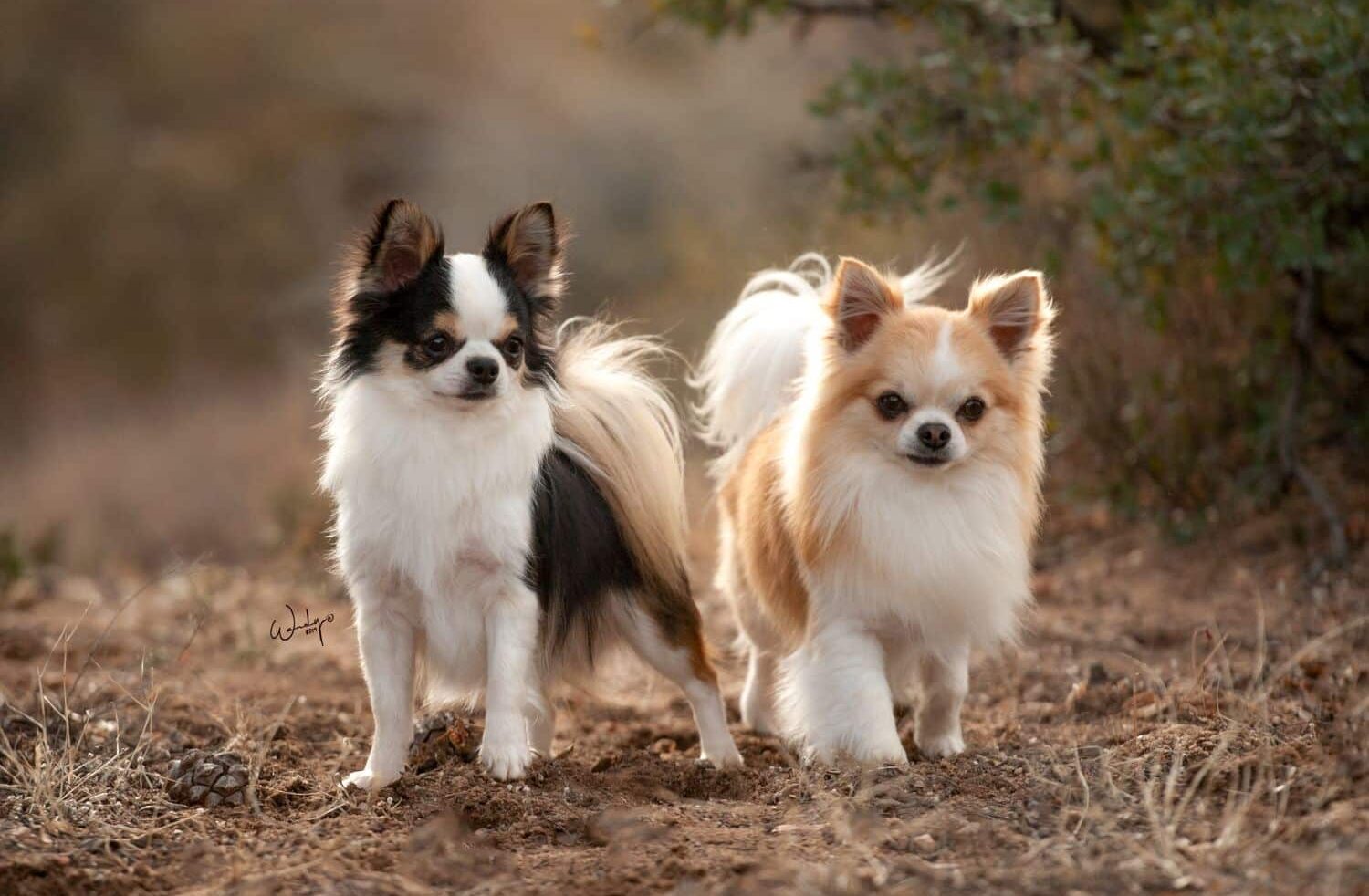
Learn what to look for when judging the Chihuahua breed in this excellent piece by AKC Judge Richard Miller. He has bred, shown, and judged the Chihuahua breed for 28 years. He also judges four of the AKC Groups (Hound, Terrier, Toy, and Non-Sporting).
The word “saucy” is used in the breed standard to describe expression. It is my opinion that saucy also describes temperament and body language. The dictionary uses several words to describe saucy. I feel the word is best described when we think of an impudent child or a defiant child. I have used photos to show this quality to the best of my ability with photographs. Both of my examples are long-coated dogs, however, a smooth should have the same bold, inquisitive self-assured posture and expression. The correct attitude for an entry in the ring is, “Go ahead; make my day.”
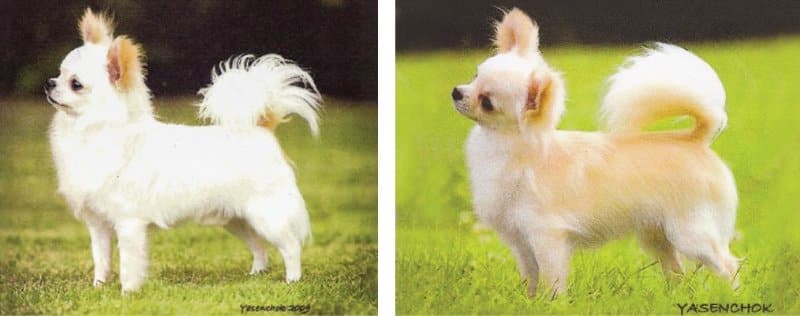
The Chihuahua breed standard does not discuss tail set, but it does mention tail carriage. Three carriages are correct (up, up and out or up and over with the tip just touching the back). A dog that carries its tail up and out tends to make itself look longer than it really is. A dog with this carriage is often harder to finish than his competition with either of the other tail carriages.
The tail carriages of the dogs used for my discussion of expression have what most breeders desire. Knowing where the bone of the tail ends is an important factor. A long coat with a huge plume may have so much coat that the tail “appears” to more than touch the back. There should be no Pug/Basenji type tails nor should we see a tail dropping over the side of the dog like a Papillon. A tail held flat in the back similar to a Pomeranian is also faulty.
A deserving Chihuahua should possess a head that is described in the breed standard, however, an entry should not win on its head type alone. I have selected two head studies as examples of a quality head. Notice the head in profile. The muzzle does not appear too short or too long. The muzzle meets the skull in the desired perpendicular manner. Notice the underjaw of this example. The underjaw extends right out to the end of the muzzle. The eyes are nice and large and well set into the skull. The straight-on example shows the domed top skull.
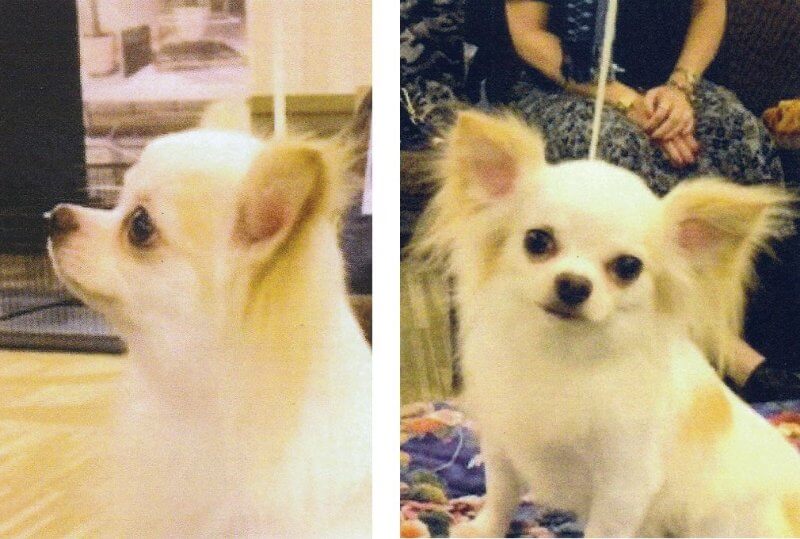
The correct Chihuahua head is both rounded at the stop around to the ears and between the ears on top of the skull. With regard to grooming, I prefer to see a dog presented as natural as possible. This is purely my preference. You will see long-coats heavily groomed with no ear fringe inside the ear. Neither of these dogs are at attention. The ears would be held much more closely to one another at attention. The wording “serious fault” is used in our standard to describe a dog with anything other than a scissors bite or a level bit. Undershot, overshot and wry bites are serious faults too often seen in the show ring.
The Chihuahua is to be only slightly longer than tall. Shorter backs are preferred in males. The black and tan tri-colored male that appears in this article is to be faulted for possessing too long of a body. If the Chihuahua has a front well under itself as called for in our standard it should appear to be nearly square. The overhang of the front results in slightly longer than tall. This dog appears to have the desired level topline. This level top line should be present when standing or when moving.
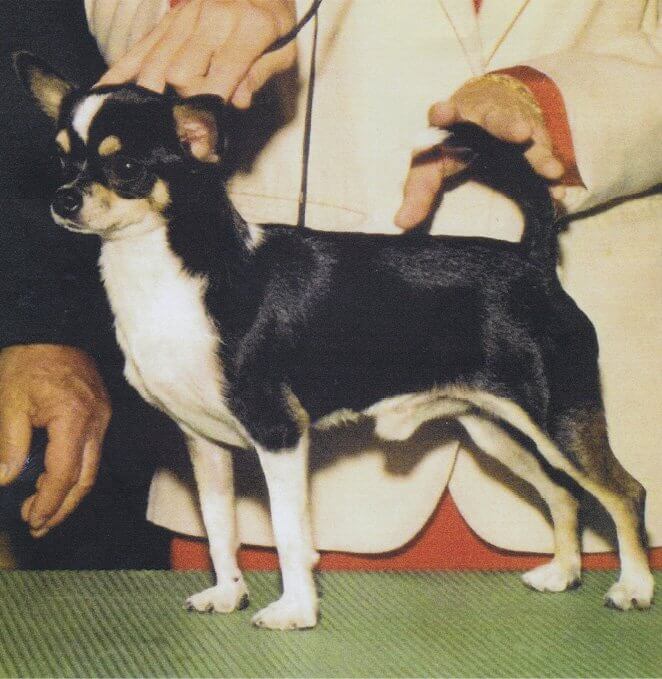
Movement is described in the breed standard as swift. Swift should mean going around the ring swiftly. It does not mean a rapid sewing machine up and down kind of a movement. A judge can make several evaluations of correct movement as a class is sent around the ring. The front should reach rather than lift. The rear should be a driving rear with pads of rear feet clearly visible as the dog moves away. The standard calls for convergence as speed increases. A Chihuahua should not move with its front wide apart like a French Bulldog. Both front and rear should converge somewhat.
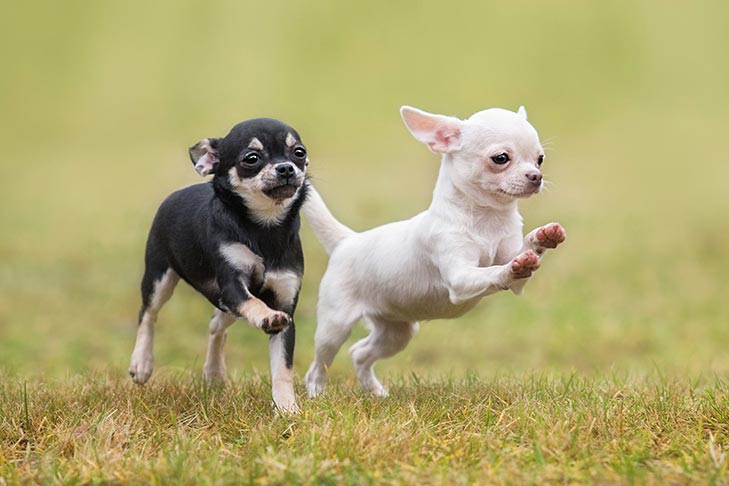
There are some generic kinds of evaluations that a judge should make just as he/she would judging any breed. These include spring of ribs, pasterns, condition, elbows, etc. The Chihuahua is often considered to be the smallest of all purebred dogs. This is in size only. A typical Chihuahua is often guilty of forgetting his size and will challenge a dog much larger. Handlers have to be constantly aware of this problem, and not allow their Chihuahuas to go after larger dogs.
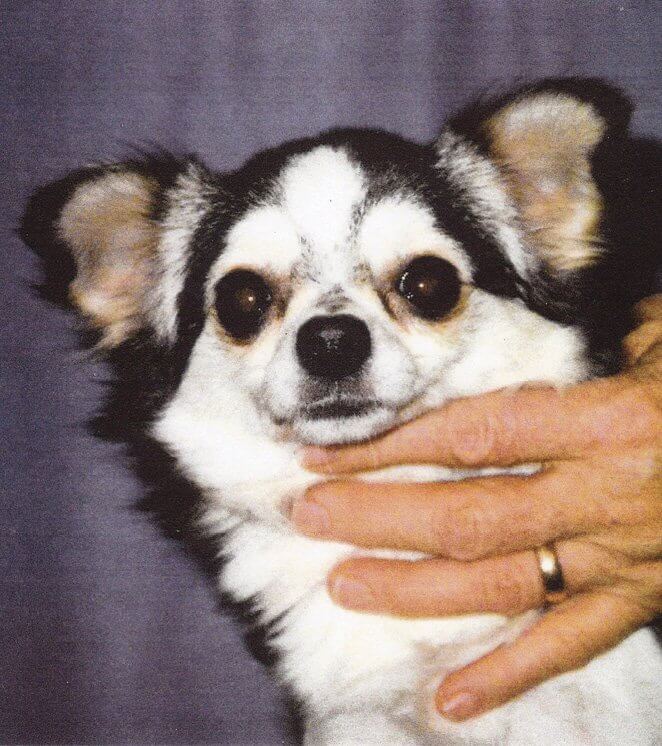
The Chihuahua has personal space just like a Doberman or a Mastiff. Judges do not get into the face of a Dobe, but there are some judges that think they need to get into the space of the Chihuahua. This is a pet peeve of mine. There is no need to get right in the face of a Chihuahua and talk baby talk to it. Even the most well-behaved Chihuahua will not tolerate such an invasion of personal space nor should it. This problem seems to happen less often of late.
I don’t think a person has been born who can tell for sure if a dog is over the six pound limit. That is why we have scales available to the judging public. Don’t guess about size; call for the scale. A 5 lb. 15 oz. entry should be given the same consideration as a tiny competitor. As long as a dog does not exceed the six pound limit it should be given full consideration. Our standard no longer says the smaller entry should prevail.
Don’t guess about size; call for the scale.
There are only four disqualifications. These should be considered as the dogs are being examined.
Broken down or cropped ears is a difficult DQ to understand. (I have included a photo of a dog with broken down ears.) Handlers of a dog with questionable ears don’t usually allow their entry to look down. If you question an ear or ears, bait the dog so that the dog has to look downward. If the ear cannot be held erect while looking down, the ear(s) is/are a disqualification.
The example included in this discussion has a crease at the outer edge of the ear. Sometimes a dog will have ears that bounce as the dog moves around the ring. This is not necessarily a broken down ear. You will not see cropped ears in the show ring nor will you see docked tails or bobbed tails. Bareness in a long-coated entry is seldom if ever seen. My experience has taught me that bareness appears under the chin and down the throat of the dog. Here again, this is a DQ that you most probably will not see in the ring.
The Chihuahua Club of America has spent many long hours working with an artist and club members to create an illustrated standard. Once completed this illustrated standard should prove to be an invaluable asset to all judges of the Chihuahua.
